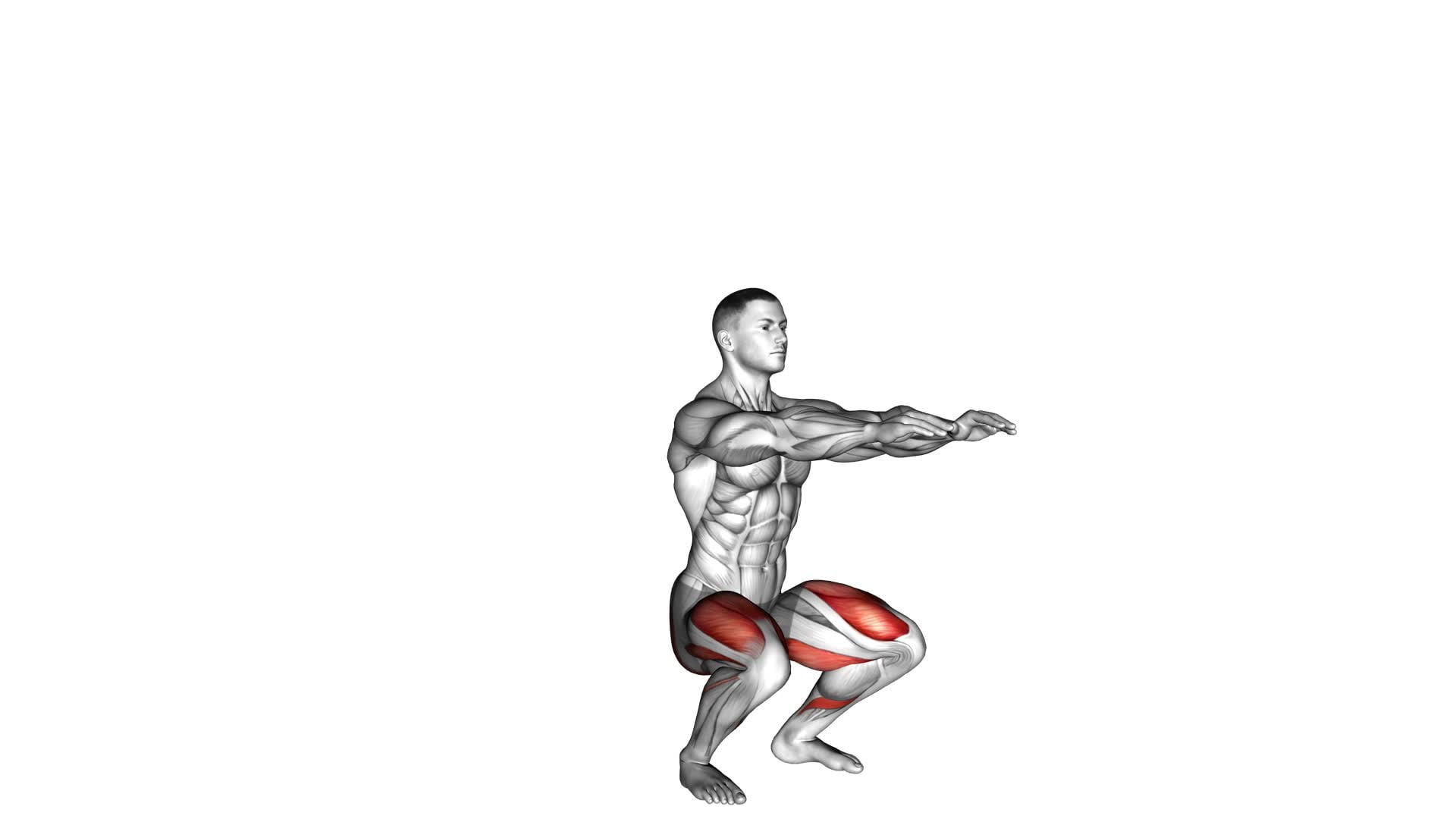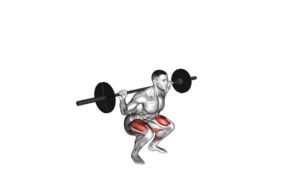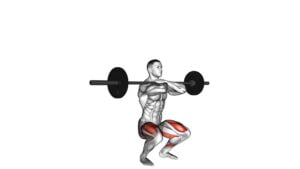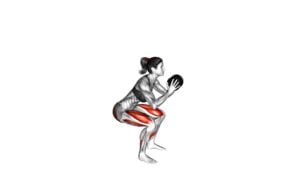Pause Squat – Video Exercise Guide & Tips

Looking to take your squat game to the next level? Check out this video exercise guide and tips for the pause squat.
Watch This Exercise Video
Pause squats offer a multitude of benefits, from building strength and stability to improving your overall squat form. In this article, you'll learn the proper technique, variations, and progressions to keep challenging yourself.
Avoid common mistakes and maximize your results with these expert tips.
Get ready to elevate your squat game and see impressive gains!
Key Takeaways
- Improved muscle activation in quadriceps, hamstrings, and glutes
- Increased stability and proprioception
- Builds strength and power in lower body
- Reduces risk of injury
Benefits of Pause Squats
Pause squats offer numerous benefits for improving your strength and stability during lower body exercises. One of the key benefits is improved muscle activation. When you pause at the bottom of the squat, you force your muscles to work harder to maintain tension and control. This increased time under tension leads to greater muscle activation, particularly in the quadriceps, hamstrings, and glutes. By activating these muscles more effectively, you can build more strength and power in your lower body.
Another benefit of pause squats is increased stability. When you pause at the bottom, you challenge your balance and stability, forcing your muscles to work in unison to maintain proper form. This can help improve your overall stability and proprioception, which is your body's awareness of its position in space. By enhancing your stability, you can reduce the risk of injury and perform other lower body exercises with better form and control.
Proper Form and Technique
To perform pause squats with proper form and technique, you need to focus on maintaining tension and control in your muscles throughout the exercise. Here are some key points to keep in mind:
- Common misconceptions:
- Many people mistakenly believe that pause squats are just like regular squats, but with a brief pause at the bottom. However, the pause itself is what sets this exercise apart and makes it more challenging.
- Another common misconception is that you should relax your muscles during the pause. In fact, you should aim to maintain tension in your muscles throughout the entire movement.
- Importance of proper breathing:
- Proper breathing is crucial during pause squats. Take a deep breath before descending into the squat and exhale as you drive back up. This helps stabilize your core and maintain proper form.
- Avoid holding your breath or shallow breathing, as this can lead to decreased performance and increased risk of injury.
By focusing on maintaining tension and control in your muscles and practicing proper breathing techniques, you'll maximize the benefits of pause squats.
Now, let's move on to the next section about variations and progressions.
Variations and Progressions
Explore different variations and progressions to challenge yourself and continuously improve your pause squats.
By incorporating pause squat variations into your workout routine, you can target different muscle groups and add variety to your training.
One variation is the front pause squat, where you hold the barbell in front of your body instead of on your back. This variation places more emphasis on your quadriceps and core muscles.
Another option is the pause box squat, where you pause at the bottom of the squat while sitting on a box. This variation helps improve your explosiveness and power out of the bottom position.
As for pause squat progressions, you can gradually increase the duration of the pause to challenge your strength and stability. Start with a one-second pause and progressively work your way up to longer pauses, such as three or five seconds.
Additionally, you can increase the weight you lift or perform pause squats with bands or chains to add extra resistance.
Remember to always maintain proper form and technique throughout these variations and progressions to prevent injury and maximize results.
Common Mistakes to Avoid
Be mindful of the mistakes to avoid when performing pause squats to ensure proper form and maximize the effectiveness of your workout. Here are some common mistakes to watch out for:
- Incorrect depth: One of the most common mistakes isn't going low enough during the squat. Make sure to squat down until your thighs are parallel to the ground or even lower, as this ensures proper engagement of the leg muscles and prevents unnecessary strain on the knees.
- Rounding the back: Another mistake to avoid is rounding your back during the squat. Keep your chest up, shoulders back, and spine neutral throughout the movement. This helps maintain proper alignment and prevents potential injury.
- Lack of control: It's important to maintain control throughout the exercise. Avoid rushing through the movement and instead focus on a slow and controlled descent, pausing at the bottom, and then driving back up with power. This ensures that you're properly engaging the muscles and getting the most out of each repetition.
- Not engaging the core: Proper execution of pause squats requires engaging the core muscles to maintain stability. Avoid letting your core go lax or relying solely on your legs to do the work. Engage your core by bracing your abs and maintaining a tight midsection throughout the exercise.
Tips for Maximizing Results
By avoiding these common mistakes and focusing on proper execution, you can maximize the results of your pause squats. To take your pause squats to the next level, consider incorporating advanced training techniques. These techniques can include performing pause squats with bands or chains, or even incorporating tempo variations such as slow eccentric or explosive concentric movements. By adding these variations, you challenge your muscles in new ways and promote further strength gains.
In addition to advanced training techniques, recovery and rest periods are crucial for maximizing results. Pause squats are a demanding exercise that places significant stress on your muscles and joints. It's important to allow adequate time for recovery to prevent overtraining and promote muscle growth. Aim for 48 to 72 hours of rest between pause squat sessions to give your body sufficient time to repair and rebuild.
Furthermore, proper nutrition and hydration are essential for maximizing the results of your pause squats. Make sure you're consuming enough protein to support muscle repair and growth. Stay hydrated throughout your training sessions to optimize performance and prevent muscle cramps.
Frequently Asked Questions
How Many Sets and Reps Should I Do When Performing Pause Squats?
When performing pause squats, it's important to consider the number of sets and reps. Different variations of pause squats can be beneficial for your workout routine.
The number of sets and reps will vary depending on your fitness goals and current level of strength. It's recommended to start with 3-4 sets of 8-12 reps, focusing on proper form and technique.
As you progress, you can increase the intensity by adding more sets or increasing the weight.
Can Pause Squats Help Improve My Vertical Jump?
Pause squats can be a valuable addition to your vertical jump training techniques. By incorporating pause squats into your workout routine, you can improve your explosive power, which is crucial for a higher vertical jump.
The benefits of pause squats include strengthening your leg muscles, increasing your overall lower body strength, and enhancing your ability to generate force quickly.
Are Pause Squats Suitable for Beginners or Only for More Advanced Lifters?
Pause squats can benefit both beginners and advanced lifters. By incorporating a brief pause at the bottom of the squat, you engage your muscles for a longer duration, increasing strength and stability.
Beginners can start with lighter weights and gradually increase the load as they become more comfortable with the movement. Advanced lifters can challenge themselves by adding more weight or increasing the duration of the pause.
Progressing with pause squats allows you to continually improve your squatting technique and overall strength.
How Long Should I Pause at the Bottom of the Squat Position?
When doing pause squats, it's important to focus on proper form to get the most out of this exercise. The length of the pause at the bottom of the squat position can vary, but aim for a pause of about 2-3 seconds.
This helps to build strength and stability in your muscles, as well as improve your overall squat technique. The benefits of pause squats include increased muscle activation, improved squat depth, and enhanced mind-muscle connection.
Can Pause Squats Help With Reducing Knee Pain or Knee Injuries?
Pause squats can be beneficial for reducing knee pain and preventing knee injuries.
By pausing at the bottom of the squat position, you engage your muscles and increase stability around the knee joint.
This helps to strengthen the surrounding muscles and improve overall knee stability.
Additionally, the controlled movement during the pause squat technique allows you to focus on proper form and alignment, further reducing the risk of knee injuries.
Conclusion
In conclusion, incorporating pause squats into your workout routine can provide numerous benefits such as increased strength and stability. By maintaining proper form and technique, you can maximize the effectiveness of this exercise.
Additionally, experimenting with variations and progressions can help prevent plateaus and keep your workouts challenging. Avoiding common mistakes and following these tips will ensure you achieve optimal results from your pause squats.
Remember to consult with a fitness professional before starting any new exercise program.

Author
Years ago, the spark of my life’s passion ignited in my mind the moment I stepped into the local gym for the first time. The inaugural bead of perspiration, the initial endeavor, the very first surge of endorphins, and a sense of pride that washed over me post-workout marked the beginning of my deep-seated interest in strength sports, fitness, and sports nutrition. This very curiosity blossomed rapidly into a profound fascination, propelling me to earn a Master’s degree in Physical Education from the Academy of Physical Education in Krakow, followed by a Sports Manager diploma from the Jagiellonian University. My journey of growth led me to gain more specialized qualifications, such as being a certified personal trainer with a focus on sports dietetics, a lifeguard, and an instructor for wellness and corrective gymnastics. Theoretical knowledge paired seamlessly with practical experience, reinforcing my belief that the transformation of individuals under my guidance was also a reflection of my personal growth. This belief holds true even today. Each day, I strive to push the boundaries and explore new realms. These realms gently elevate me to greater heights. The unique combination of passion for my field and the continuous quest for growth fuels my drive to break new ground.







